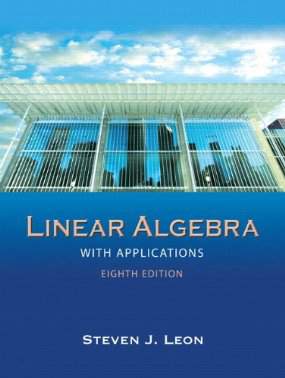Connecting...

This is a quick preview of the lesson. For full access, please Log In or Sign up.
For more information, please see full course syllabus of Linear Algebra
For more information, please see full course syllabus of Linear Algebra
Linear Algebra Kernel and Range of a Linear Map, Part I
Lecture Description
The kernel in linear algebra is a lot like eigenvalues and the determinant of a matrix where all three of these properties are the foundation of the sub-topics they reside in. In this video we’ll introduce you to the kernel of a linear map, and explore some theorems regarding the kernel. As per usual with multi-part videos this will be more of a definition video rather than an application video, so to see kernels in action or to get more insight with kernels proceed to the next video.
Bookmark & Share
Embed
Share this knowledge with your friends!
Copy & Paste this embed code into your website’s HTML
Please ensure that your website editor is in text mode when you paste the code.(In Wordpress, the mode button is on the top right corner.)
×
Since this lesson is not free, only the preview will appear on your website.
- - Allow users to view the embedded video in full-size.
Next Lecture
Previous Lecture










































 Answer Engine
Answer Engine




2 answers
Thu May 1, 2014 9:19 PM
Post by Josh Winfield on April 21, 2014
Given, L(x) = x^2 - its Ker(L) = (0) why is it not it 1-to-1 based on Theorem 2........or is it a further condition that (n does not = m)
2 answers
Last reply by: Josh Winfield
Mon Apr 21, 2014 1:30 AM
Post by Suhaib Hasan on November 15, 2012
Judging by the second definition of a kernel (the 0 vector one) does that mean that W must contain a zero vector?
2 answers
Last reply by: Shahaz Shajahan
Sun Aug 19, 2012 5:02 AM
Post by Shahaz Shajahan on August 16, 2012
there is a question that i would like to ask that involves lots of symbols, would i be able to send you a particular question, by PDF on the facebook page, the same way you sent me your answer to my previous question?